There are many different types of Pomeranians, each with a unique personality and look.
Pomeranians are a popular toy breed that can adapt to most environments, making them suitable pets for many different lifestyles. One of the things Pomeranian owners will understand is that they’re easy to dress up.
Described as bright and energetic, they’re included in the Spitz breed category, which is considered to be descendants of the larger German Spitz.
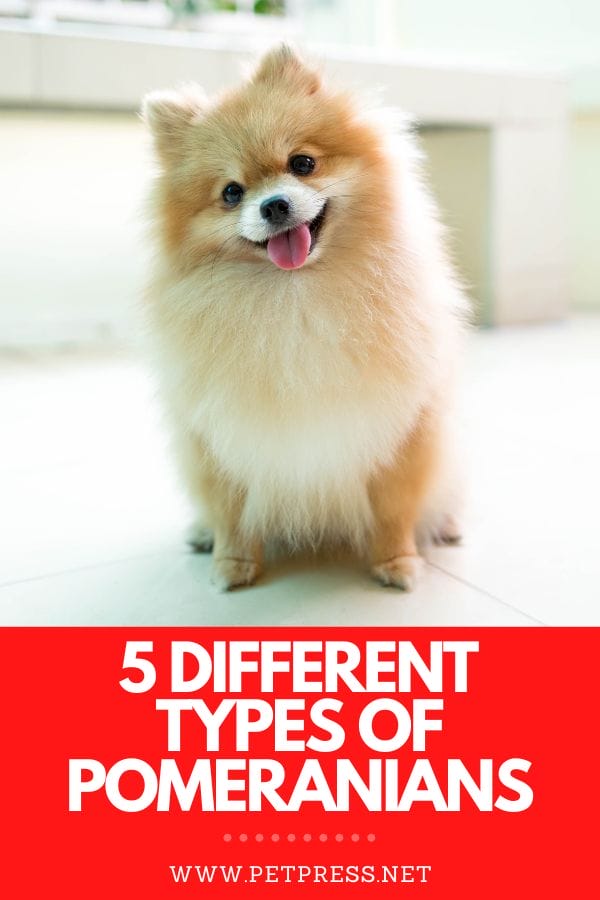
In this blog post, we will discuss five different types of Pomeranians. We will provide information on each type of dog, such as its height, weight, and temperament.
If you are considering adding a Pomeranian to your family, it is important to do your research and find the right breed for you!
Types of Pomeranian
Here are the different types of Pomeranians:
Standard Fox-Face Pomeranian
According to breed standards, Fox-Face Pomeranians are the ideal form of the purebred Pomeranian.
Despite the name, most breeders do not use the term “Fox-Face” Poms because they’re meant to adhere to the breed norms of a longer snout and pointed fox ears.
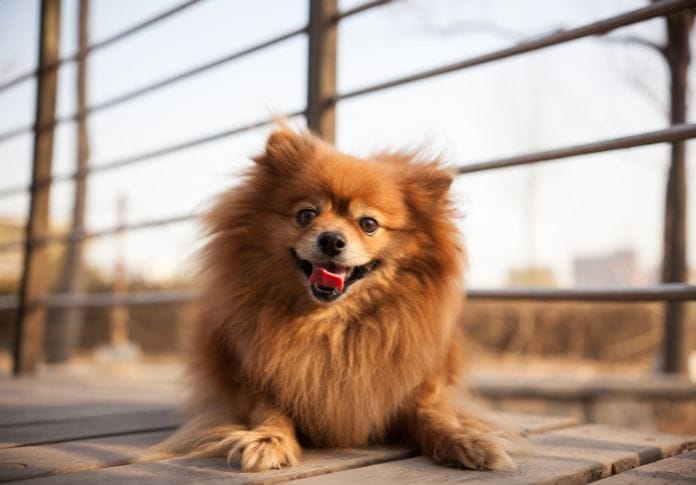
Any other variations besides the Pomeranian Fox Face will most likely not satisfy the breed’s standards.
According to standards, the Pomeranian’s muzzle length should be 1/3 to 2/3 of the skull’s length and its expression should be alert and intelligent. That’s what gives the Pomeranian’s face its fox-like appearance.
Teddy-Bear Pomeranian
The breeding standard stated that a Pom’s muzzle should be 1/3 to 2/3 the length of its skull. For a teddy bear Pomeranian, it is around 1/4 of the head length.
Teddy bear Poms have a shorter muzzle than standard Pomeranians. Their eyes are closer to the nose, their cheeks are fuller, and their body is shorter.
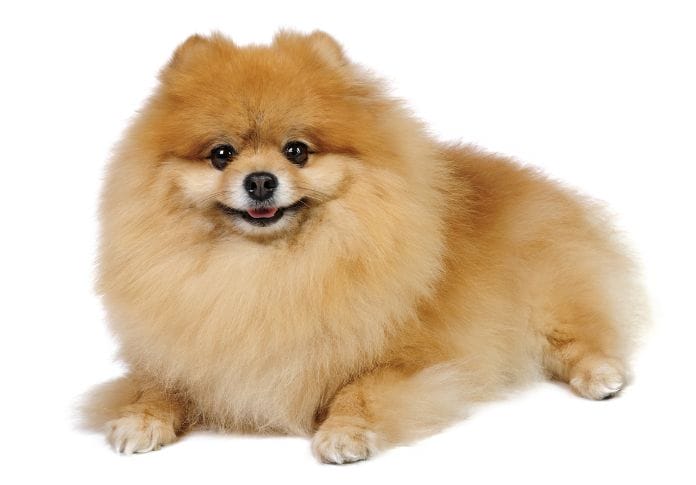
Most of these Poms will have the same problems as brachycephalic breeds (for example, Pugs, Pekingese, Shih Tzu). Because your Pom’s facial structures must fit in a smaller area than usual, this is true.
Such Pomeranians will experience health issues such as breathing difficulties due to narrow nostrils and an elongated muzzle that obstructs portions of the trachea.
Because of their small size, these Poms are much more prone to joint and bone-related problems like patella luxation or hip dysplasia.
Baby-Doll Pomeranian
The baby-doll Pomeranians are sort of like the in-between of the fox-face and teddy bear ones. Their muzzle is short, but not super short, and they have baby-like features.
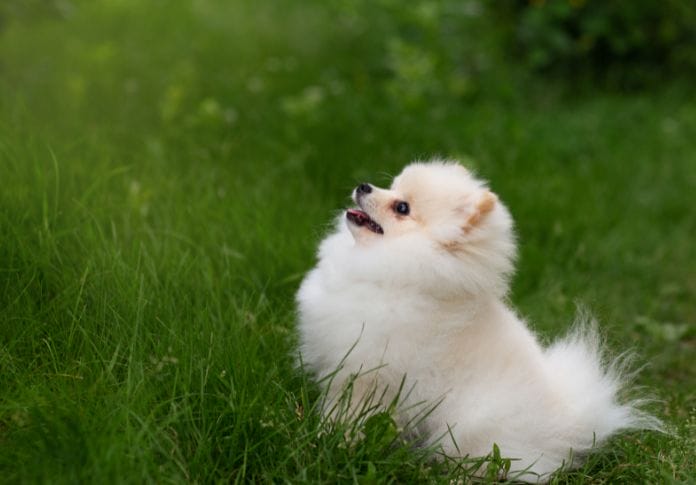
The Pomeranian puppies’ little muzzles are difficult to determine, especially when they’re newborns. You could get a teddy bear or fox-like Pomeranian even though you’re expecting a baby doll Pomeranian.
The American Kennel Club does not accept Pomeranians with muzzles shorter than the standard size, so be wary of breeders that claim to have one. You might likely be involved in a puppy scam.
Teacup Pomeranian
The smallest variety of Pomeranian is the so-called “teacup” or “mini” Pom. These are small Poms that weigh less than 3 pounds and are visibly different from the average size.
In recent years, the popularity of dogs that resemble stuffed toys has grown. (Related: 15 Realities That New Pomeranian Owners Must Accept)
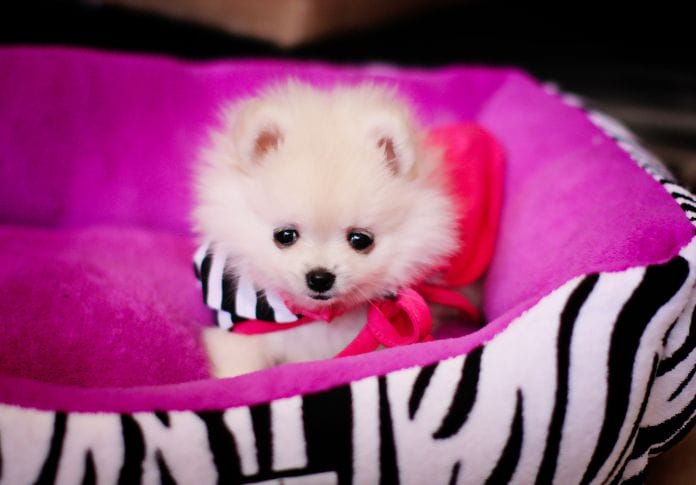
However, the practice of deliberately breeding two smaller than the breeding standard Poms to create teacup or mini Pomeranians is frowned upon by respectable breeds.
These types of Pomeranian dogs are prone to producing underdeveloped organs, diabetes, thyroid issues, and other health problems when crossed with two runts of the litter.
The majority do not survive very long.
Furthermore, Pomeranians are already small dogs. Even a short jump can result in injuries due to its size.
Pomeranian Mixes
Designer dog crossbreeds created with toy breeds have been growing in popularity, resulting in a wide range of Pomeranian mixes.
The rising demand for these designer dogs has produced “dog breeds” that range from cute to downright freakish!
Here are a few popular Pomeranian mixes that have taken over the designer dog market:
Pomchi (Pomeranian x Chihuahua)
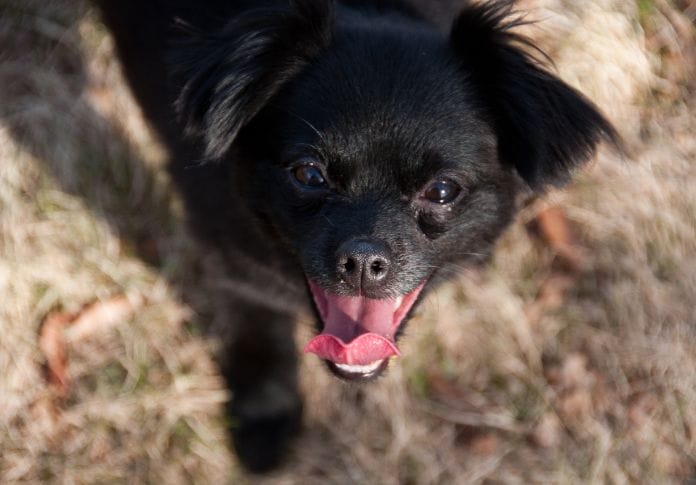
Pomapoo (Pomeranian x Poodle)

Bichonaranian (Pomeranian x Bichon Frise)

What is The Rarest Type of Pomeranian?
The rarest type of Pomeranian is the Lavender Pomeranian.
Lavender Pomeranians are considered to be the rarest variation of the breed, with coats that appear more brown than actually purple.
They can also come with several markings, including white.
Often, these dogs are born with a white or cream coat that then lightens up to lavender as they age.
However, some dogs are born brown.
Lavender Pomeranians are typically healthy dogs but may be more prone to skin allergies than other Pomeranians.
They also have a higher risk of developing alopecia X, which causes hair loss.
Due to their rarity, Lavender Pomeranians can be expensive, with some fetching prices as high as $4,000 or even $5,000.
Common Health Issues That Pomeranians Face?
Some common health issues that Pomeranians face include:
- Hypoglycemia: Pomeranians are prone to hypoglycemia, which is a sudden drop in blood sugar. This condition commonly affects small dogs and puppies under 3 months of age.
- Patellaluxation: This is a condition where the kneecaps slip temporarily out of place. It is a common health issue in Pomeranians.
- Tracheal collapse: Pomeranians are susceptible to tracheal collapse, which can cause coughing and difficulty breathing.
- Dental disease: Due to their small mouths, Pomeranians can experience dental issues such as overcrowding, tartar, or plaque buildup.
- Eye problems: Pomeranians are prone to various eye issues, including cataracts, dry eye, tear duct issues, and progressive retinal atrophy.
- Skin and coat issues: Some Pomeranians may experience skin allergies, hair loss syndrome, and coat loss.
- Heart disease: Pomeranians are susceptible to multiple types of heart disease, which can occur both early and later in life.
- Other conditions: Pomeranians may also be at risk of developing conditions such as distichiasis, elbow dysplasia, and Cushing’s disease.
The Takeaways
Pomeranians are a popular breed of dog, and they come in many different sizes, shapes, and colors.
No matter what type of Pomeranian you are looking for, you are sure to find one that will fit your lifestyle and personality. Look at our blog post about the best Pomeranian dog names to get you started.
Make sure to also check our post about the pros and cons of owning a Pomeranian before you decide on adopting one!
FAQs
Pomeranians are small dogs, typically weighing between 3 to 7 pounds and standing around 6 to 7 inches tall at the shoulder.
Pomeranians are energetic but don’t require extensive exercise. A daily walk and some playtime indoors are usually sufficient.
Pomeranians can be good with well-behaved children, but supervision is crucial due to their small size. Early socialization is key.
Pomeranians have a thick double coat that requires regular brushing to prevent matting. Monthly baths and occasional trimming may also be needed.
Yes, Pomeranians are known for being vocal. Early training can help manage their barking tendencies and create a well-behaved pet.


GIPHY App Key not set. Please check settings